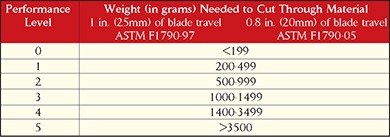Choose the Right Cut Resistant Hand Protection
Hands are one of the most vulnerable parts of the body for most workers. Proper hand protection is crucial in guarding against injuries, particularly cuts. As with all personal protective equipment (PPE), choosing the right glove for the job is critical. Before you can make the right choice, it’s important to know the hazards you’re protecting against and the level of protection you need.
It’s important to understand the difference between cut protection and cut resistance when choosing the proper hand protection –
- Cut protection is the combination of factors that help prevent a worker from being cut. A material’s cut resistance tear strength, abrasion resistance, grip, and dexterity are all important aspects of cut protection. However, cut protection encompasses other factors not related to protective apparel, and may include machine guarding, workplace set-up, working conditions, and worker training.
- Cut resistance, defined as the ability of a material to resist damage when challenged with a moving sharp-edged object, is only one part of cut protection. It also includes workplace conditions as referenced above. Cut resistance can be measured using standard testing equipment, and is often used when comparing the safety of various products.
There are three standardized testing methods used to determine cut resistance. ASTM F1790 (U.S), ISO 13997 (International), and EN 388 (Europe).
- The ASTM F1790 and ISO 13997 methods cut a sample using a straight edge blade, under load, that moves along a straight path. The information attained through the testing determines the Rating Force, or Cutting Force. The higher the Rating Force, the more cut-resistant the material. The ASTM testing is a better representation of an actual workplace.
- The EN 388 test method uses a circular blade, under a fixed load, that moves back and forth across the cotton canvas sample fabric until cut-through is achieved. The reference material and test sample are cut alternately until at lease five results are attained. The testing provides a cut index for the material. The higher the cut index, the more cut-resistant the material.
ASTM F1790 doesn’t specify any level of performance. The classification for cut resistance is provided by ANSI/ISEA 105-2005 standard. Below is a guide to help choose the right level of cut resistance for your application.

Cut resistant gloves are important to protecting hands in hazardous applications. Choosing the proper level of protection is a crucial step. If you have questions about what level of protection you need, give our Technical Support Reps a call at 800-922-8553, or email techsupport@northernsafety.com. We’re here to provide the information you need to make the right choice.